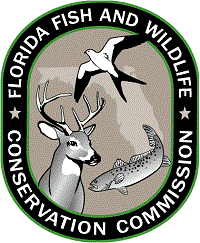Florida WC Continues Cooperative Efforts on Fishery Management in Biscayne National Park

At its Nov. 21 meeting in Weston, the Florida Fish and Wildlife Conservation Commission (FWC) reaffirmed its support for implementing a new Fishery Management Plan inside Biscayne National Park (BNP). FWC rulemaking will need to occur in the future for many of the Park’s proposed changes to go into effect.
“This decision offers the opportunity to start the discussion with our stakeholders on this subject, so that when we move forward, we can do so with a plan,” said Commissioner Charles W. Roberts III.
The proposed Fishery Management Plan could include adding limits on fishing parkwide, such as eliminating the use of SCUBA and trigger mechanisms when spearfishing; eliminating the spiny lobster two-day sport season; slowly phasing out commercial fishing; creating trap-free and no-trawl zones; and modifying the bag limit, size limit or seasons for some species. Each proposed change that requires FWC approval would be brought before the Commission and the public would have an opportunity to comment.
The Commission also directed staff to continue working with BNP on a supplement to the Park’s General Management Plan, with the goal of providing fishing opportunities for anglers within a previously proposed no-fishing zone.
The measures proposed under the newly identified General Management Plan preferred alternative, which includes a new and novel approach for managing fisheries, will continue to allow recreational fishing throughout the Park while meeting the National Park Service’s goals for BNP.
“We need to manage these resources for longevity and for the benefit of the people while making sure our agency and the Park Service both reach our goals,” said Commissioner Ron Bergeron. “We have to make sure we have sustainable access and enjoyment for the people of Florida.”
Public comment is currently being accepted by the National Park Service for the supplement to the draft General Management Plan; three public meetings are planned for the week of Dec. 9. Visit NPS.gov/bisc for more.
The Park’s Fishery Management Plan is intended to guide fisheries management decisions over the next five to 10 years. The General Management Plan establishes an overall long-term management philosophy about visitor use in general and a variety of activities in the Park, while guiding decision making and problem solving over a 15- to 20-year time period. The FWC has been working closely with the National Park Service on the development of these plans for more than 10 years.
“Biscayne National Park is encouraged by the FWC’s recommendations to proceed with Park planning efforts,” said BNP Superintendent Brian Carlstrom. “We look forward to continuing our cooperative approach with the FWC to improve Park resource conditions.”
To learn more, visit MyFWC.com/About and click on “The Commission,” “Commission Meetings” and “Agenda” under “November 20-21, 2013.”

